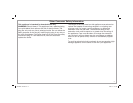
5
How to Make Hard-, Medium-,
or Soft-Cooked Eggs
1 2
Choose the number of large eggs
you want to cook and locate type
of cooked egg you want on the
water measuring cup. Fill with
cold water to that line.
NOTE: This product works best
for large eggs. Adjust amount of
water for other sizes of eggs.
Pour water into center of water
reservoir. Always make sure that
center of reservoir is filled first
before outer ring.
NOTE: Always use cold water.
NOTE: Never operate egg cooker
without water in the center of the
reservoir, or use a liquid other than
water for cooking purposes, since
this may damage the unit.
WARNING! Food Safety Hazard.
• Consuming raw or undercooked eggs may increase your risk
of foodborne illness.
• For more information, refer to the U.S. FDA’s Food Facts
“Playing It Safe With Eggs” at
http://www.foodsafety.gov/keep/types/eggs/index.html
According to the FDA:
• Thorough cooking is perhaps the most important step in making
sure eggs are safe. Cook eggs until both the yolk and the white are
firm. Scrambled eggs should not be runny.
• Casseroles and other dishes containing eggs should be cooked to
160°F (72°C). Use a food thermometer to be sure.
• For recipes that call for eggs that are raw or undercooked when
the dish is served, use either shell eggs that have been treated to
destroy Salmonella, by pasteurization or another approved method,
or pasteurized egg products.
840229301 ENv02.indd 5840229301 ENv02.indd 5 6/26/13 1:07 PM6/26/13 1:07 PM


















